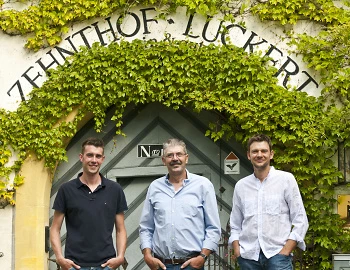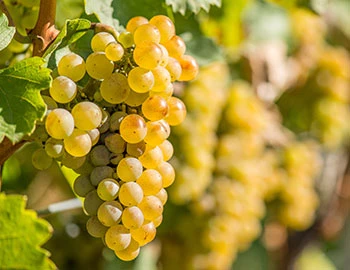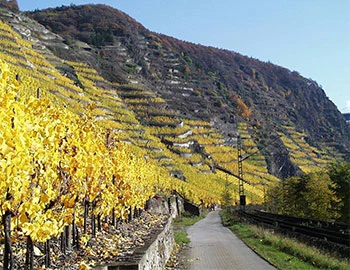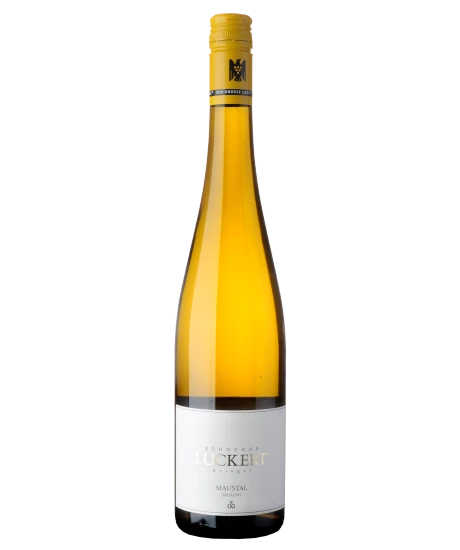Maustal Riesling Grosses Gewächs 2021
QbA Franken, Zehnthof Weingut Luckert, 750 ml

Description
This Riesling Maustal Grosses Gewächs from Franconia rocks! In the "Maustal" vineyard, Riesling has been growing on sparse shell limestone soil for over 35 years. These old vines on the slopes of the Main produce a Riesling that is particularly distinguished by its depth, complexity, finesse and vibration. It is enormously full-bodied, the aroma is reminiscent of apricots and lemongrass. Intensely tangy on the palate, citrusy with a nice grip and a salty vein. Tip: decant for approx. 2 hours before drinking. Very long ageing potential.
Attributes
| Grape variety: | Riesling |
| Producer: | Weingut Zehnthof Luckert |
| Origin: | Germany / Franconia |
| Other vintages: | 2022 |
| Label: | Certified organic or biodynamic wine |
| Ripening potential: | 2 to 15 years |
| Drinking temperature: | 10 to 12 °C |
| Food Pairing: | Coquilles Saint Jacques on lentils, Sushi, Sashimi, Ceviche, Mild Asian dishes |
| Volume: | 13.0 % |
| Note: | Contains sulphites |
Zehnthof Luckert Winery
The winery is located in the Zehnthof prince-bishop's residence built in Sulzfeld am Main, Lower Franconia in 1558, and is known for wines with a distinctive and mineral character. The vineyards covering 17 hectares belonging to the winery are cultivated by Ulrich Luckert, his brother Wolfgang and the latter's son Philipp.
Since 1955 the winery has belonged to the VDP. The Verband Deutscher Prädikatsweingüter (Association of German Quality Wineries) is a federation of around 200 wineries in Germany that promotes binding quality standards and - since 1990 - the ecological management of its members' vineyards. In terms of VDP classification the Zehnthof-Luckert range includes 'Gutsweine' (estate-bottled) wines, 'Erste Lage' (premier cru) wines from the Berg and Sonnenberg vineyards, as well as 'Grosse Lage' (grand cru) wines from the Maustal vineyard. The wines enjoy EU organic certification.

Riesling
The cold-weather king
The Riesling is the flagship of the German wine industry. It grows from north to south in all growing areas. It is also comfortable in the neighbouring Alsace region and in Austria. Its specialty is being vinified to a variety of degrees of sweetness, from bone-dry wines to ice wine. Moreover, thanks to its spirited acidity, it ages better than many reds. The typical Riesling smells of citrus, peach and apricot, shows hints of flint, and with maturity develops an idiosyncratic petrol note. It reflects its terroir like hardly any other white variety. Thus, it often gets fuller and more aromatic in Austria than in Germany. In Alsace, in turn, it has a particular mineral taste. Riesling is a wonderful culinary companion. It fits well not only with fish and shellfish, but also takes the heaviness from hearty meals. And with a fine sweetness and acidity balance, it works wonders for Asian cuisine.

Germany
Germany – Into the elite the hard way
Sitting in the heart of Europe, the hilly, lake-dotted landscape of Germany provides ideal, fertile soil for the most diverse vine varieties. From Albalonga to Zweigelt, over 140 different grape varieties are grown on about 100,000 acres, cared for by nearly 50,000 vintners. Most of these vintners are young, modern, internationally trained, inquisitive and urbane. It is hardly surprising, then, that German wine has a good reputation well beyond the country's borders.



